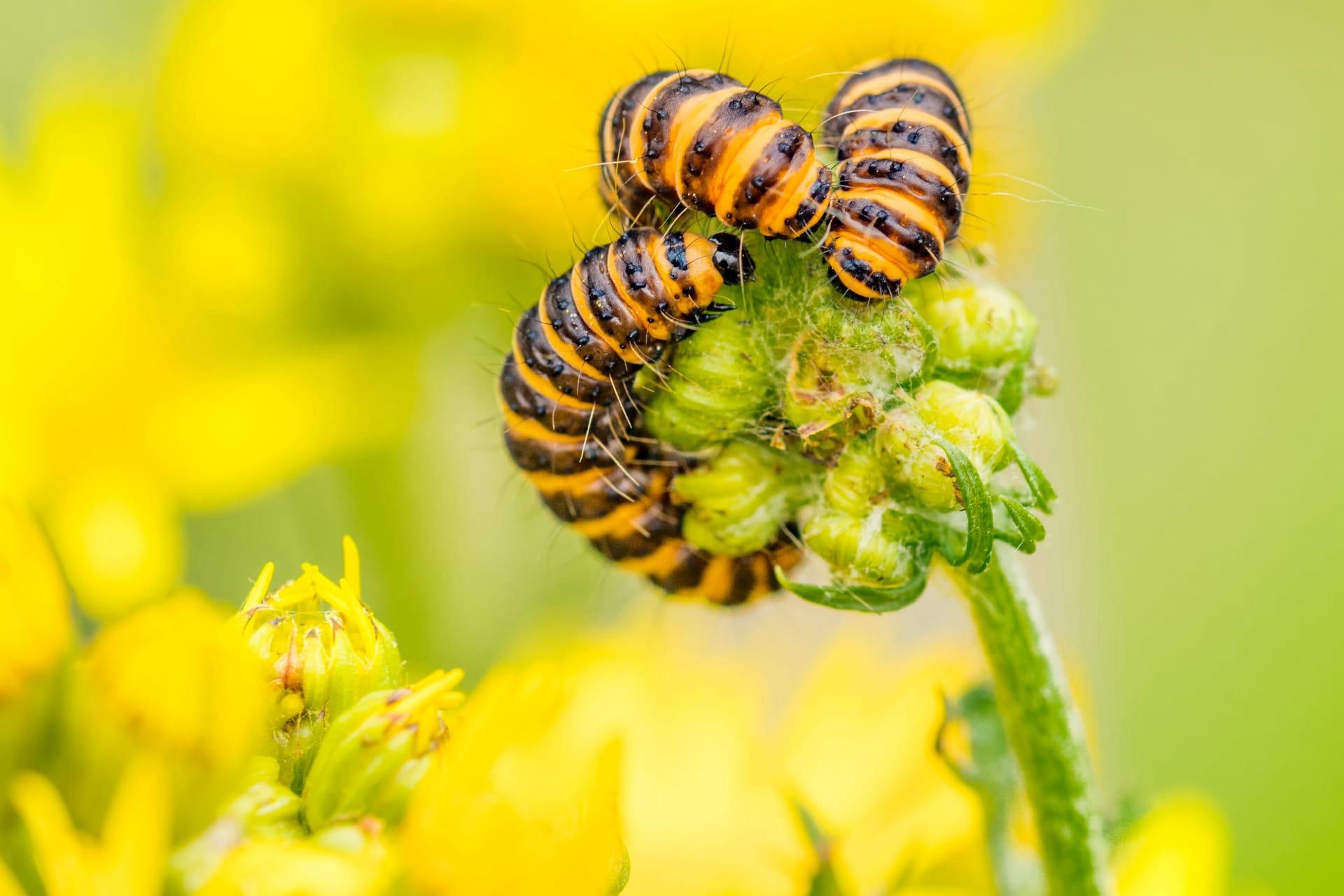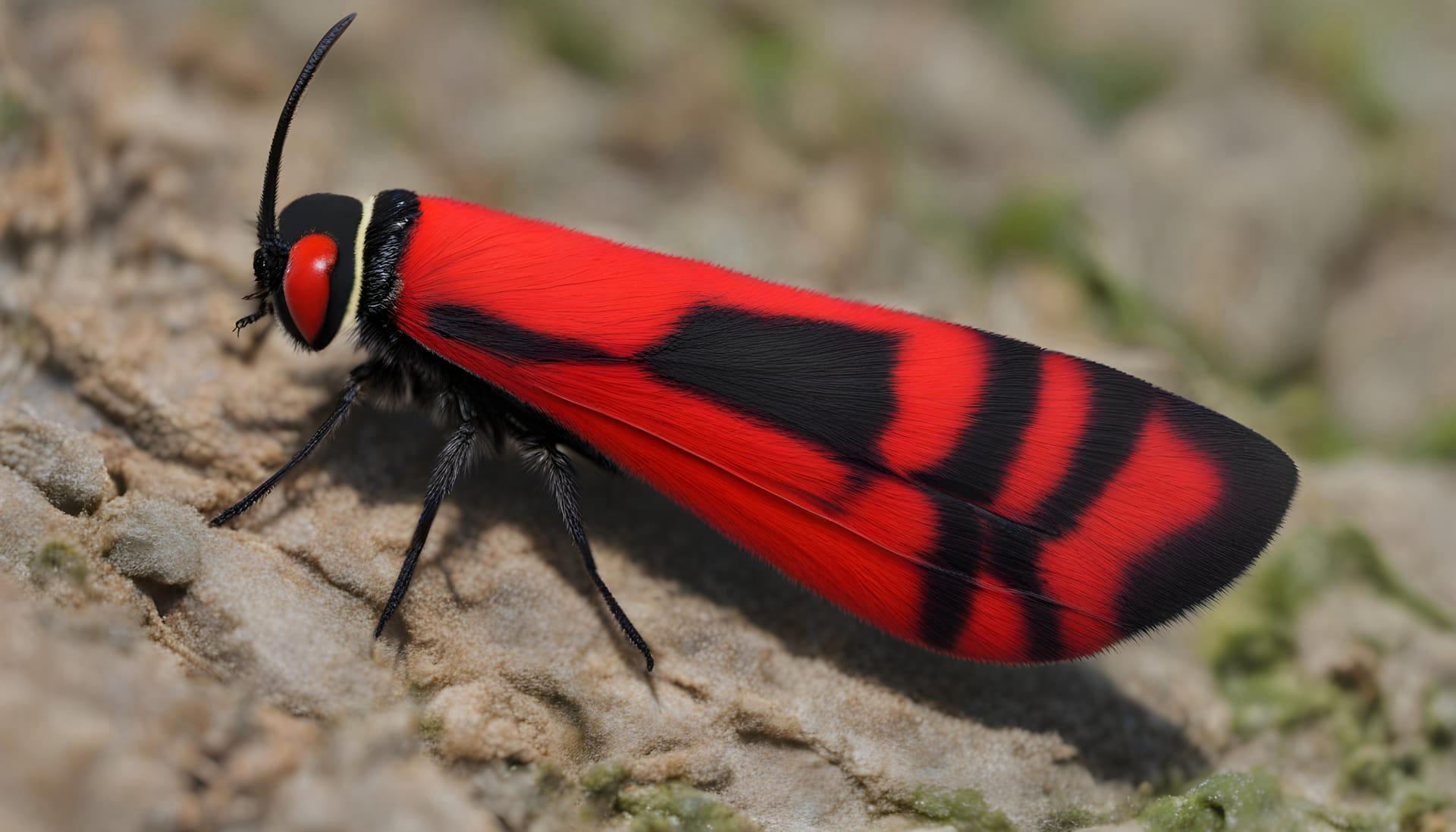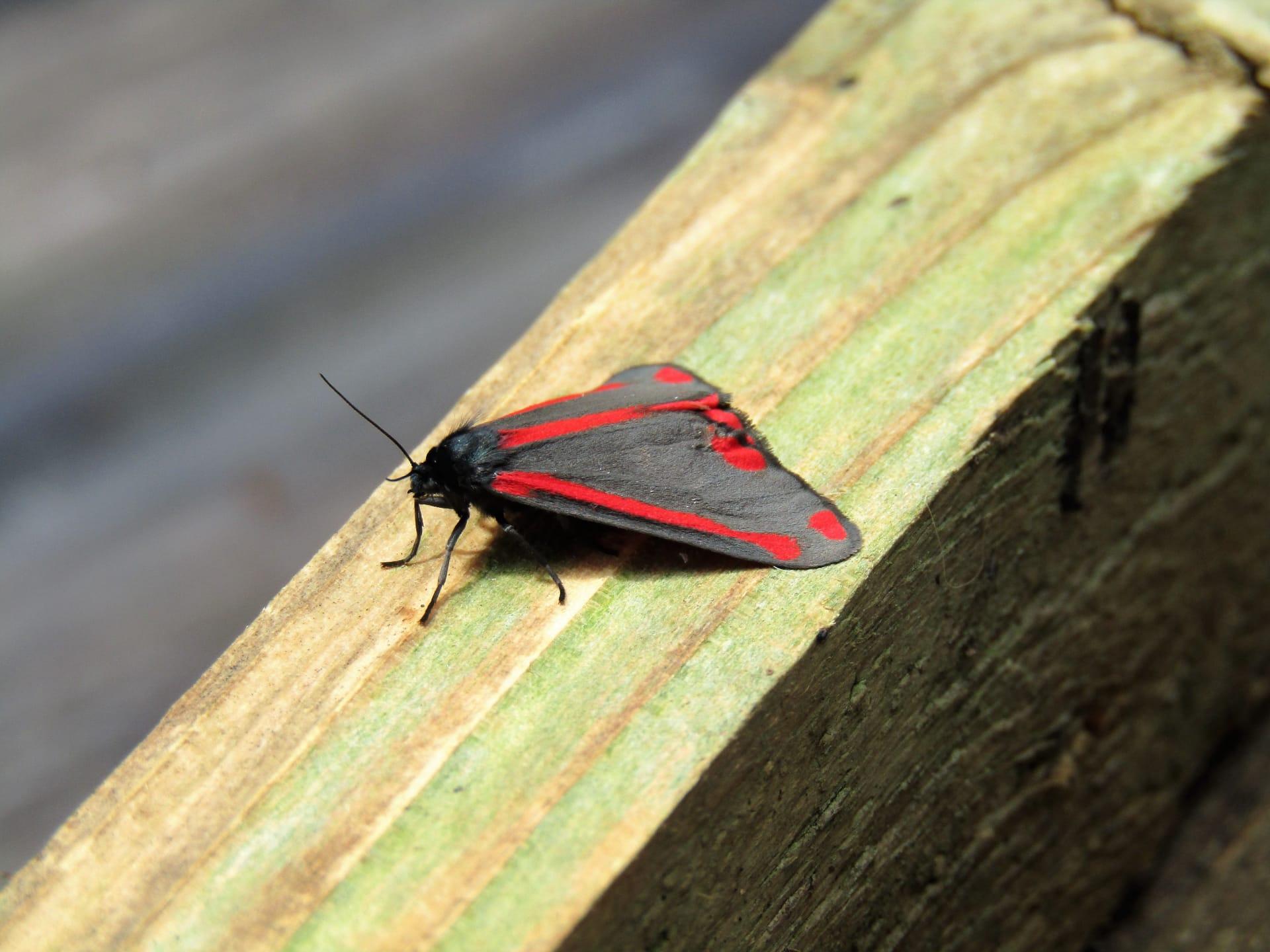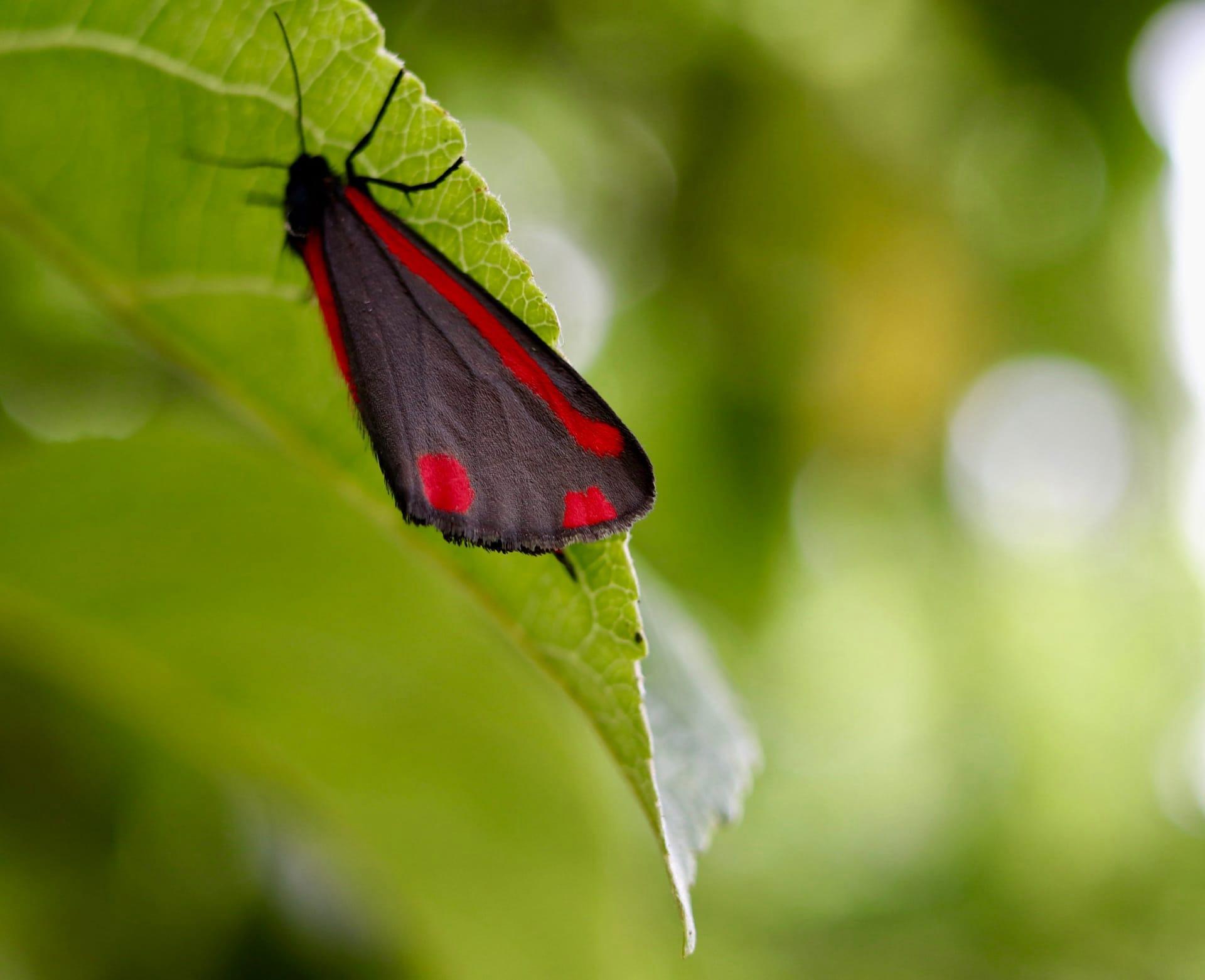1
The Cinnabar Moth, scientifically known as Tyria jacobaeae, is a small but striking creature with a wingspan of only 1.5 to 1.8 inches (38 to 45 mm). What makes it stand out is its vivid color pattern: the wings are a deep, velvety black with bright red markings. This coloration isn't just for show; it's a warning to predators about its toxicity. The moth contains chemicals that it accumulates during its caterpillar stage from its host plant, ragwort, making it a distasteful and potentially harmful meal for birds and other predators.
Another fascinating aspect of the Cinnabar Moth is its role in controlling the spread of ragwort, a toxic plant. In some countries, like the UK, the moth has been introduced as a biological control agent to manage ragwort populations, which can be harmful to livestock if ingested. The caterpillars of the Cinnabar Moth are voracious eaters, feeding almost exclusively on ragwort leaves. They can consume significant amounts of the plant, thus helping to keep its growth in check. This biological control method is considered environmentally friendly compared to chemical alternatives, highlighting the moth's importance in ecosystem management.

2
The Cinnabar Moth's reproductive cycle is a fascinating blend of precision and timing. Adult moths emerge from their cocoons in late spring, typically around May or June, depending on the climate. Once they emerge, the moths have a very short lifespan, living only for about a week or two. During this brief period, they engage in a frenzied mating ritual. The females lay up to 300 eggs, usually on the underside of ragwort leaves. This strategic placement ensures that the emerging caterpillars have immediate access to their primary food source.
Contrasting their adult form, Cinnabar Moth caterpillars display a strikingly different appearance. They are predominantly yellow and black striped, providing them with excellent camouflage against predators like birds. These stripes are not just for defense; they also play a role in thermoregulation. The caterpillars can align their bodies to the sun to control their temperature, optimizing their growth and development. This unique adaptation is crucial for their survival, as the caterpillars need to store enough energy for metamorphosis into moths.

3
One of the unique features of the Cinnabar Moth is its contribution to scientific research, particularly in the field of genetics and evolutionary biology. Studies have shown that populations of Cinnabar Moths can rapidly evolve resistance to certain toxins in their host plants. This adaptability is a clear example of natural selection in action and provides valuable insights into how species can evolve over relatively short periods to survive in changing environments.
Another interesting fact about the Cinnabar Moth is its impact on local folklore and symbolism. In some cultures, the moth is seen as a symbol of change and transformation, owing to its dramatic metamorphosis from a caterpillar to a moth. Additionally, its striking coloration has made it a subject of art and literature, often being portrayed as a creature of beauty and mystery. This cultural significance adds another layer to our understanding of the moth, beyond its ecological and scientific importance.

4
Despite its benefits in controlling ragwort, the Cinnabar Moth also faces challenges. One significant issue is habitat loss due to agricultural practices and urbanization. This decline in suitable habitats can lead to reduced populations of the moth, impacting its role in controlling ragwort and its overall presence in the ecosystem. Conservation efforts are important to ensure the moth's survival and the continued balance it brings to its environment.
The Cinnabar Moth also plays a role in citizen science projects. Enthusiasts and researchers alike track the moth's distribution and numbers, contributing to broader ecological studies. This involvement of the public in scientific research not only helps in gathering large amounts of data but also raises awareness about the importance of biodiversity and the role of individual species within an ecosystem. Such initiatives demonstrate how public participation in science can yield valuable information and foster a greater appreciation for nature.

5
Light pollution is a significant factor affecting the Cinnabar Moth, particularly in urban areas. Artificial lights can disrupt the moth's natural behaviors, such as mating and feeding patterns. Studies have shown that increased light pollution leads to lower moth populations in affected areas, highlighting the need for environmentally conscious lighting solutions in urban planning.
Finally, the Cinnabar Moth has been a subject of various environmental studies examining the impact of climate change on insect populations. Researchers have observed changes in the moth's range and behavior that correlate with shifting climate patterns. These studies underscore the importance of understanding and mitigating the effects of climate change, not only for the survival of individual species like the Cinnabar Moth but also for the health of ecosystems worldwide. The Cinnabar Moth serves as a small but significant indicator of broader environmental changes and challenges.